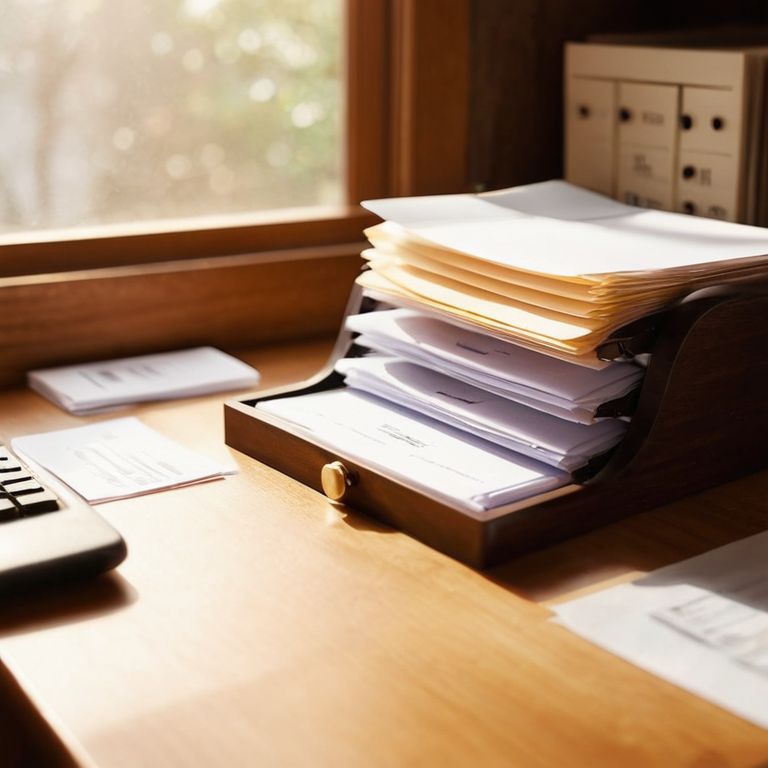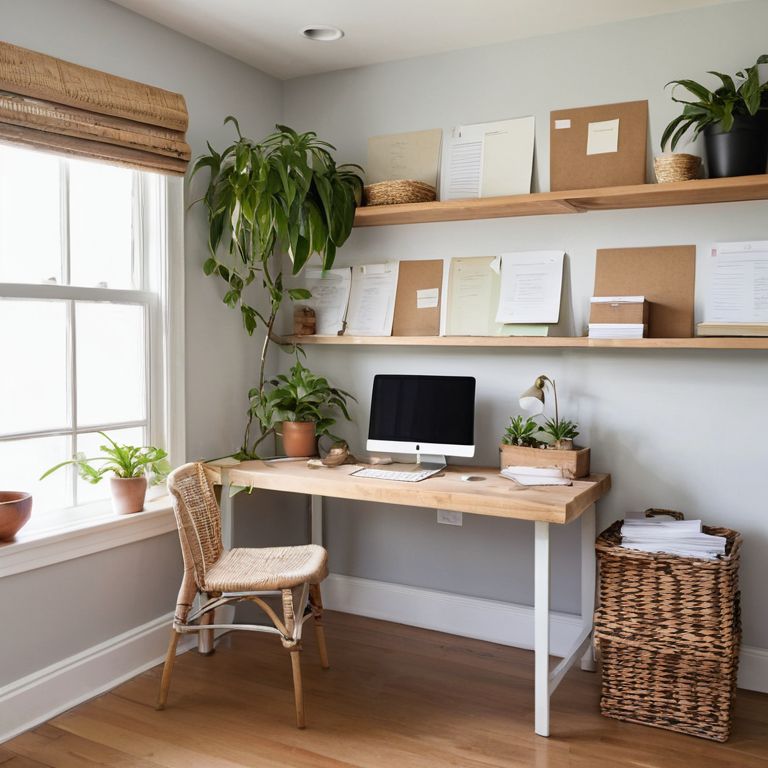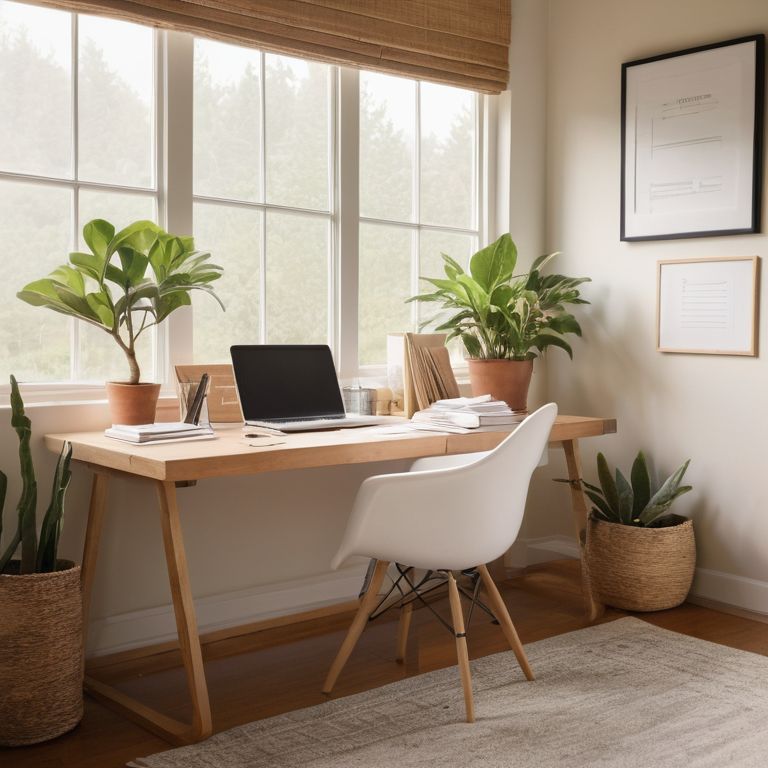As I sit in my own serene sanctuary, surrounded by the soothing sounds of ambient music and the gentle glow of my bonsai trees, I’m reminded of the countless times I’ve seen cluttered spaces wreak havoc on people’s minds. The myth that creating a filing system has to be a daunting task is one I’ve heard all too often. But the truth is, learning how to create a simple filing system for paper can be a therapeutic process, one that brings a sense of order and calm to your home and mind. I’ve seen it time and time again in my work as a professional organizer: a tidy space can be a powerful catalyst for mental clarity.
In this article, I’ll share my straightforward approach to how to create a simple filing system for paper, one that focuses on practicality and emotional benefits. You’ll learn how to sift through your paperwork, decide what’s truly important, and create a system that works for you, not against you. My goal is to empower you with the tools and mindset needed to transform your space into a true sanctuary, where every object has a purpose or a place. By the end of this guide, you’ll be well on your way to taming the paper chaos and cultivating a sense of serenity in your home.
Table of Contents
Guide Overview: What You'll Need

Total Time: 1 hour 15 minutes
Estimated Cost: $10 – $30
Difficulty Level: Easy
Tools Required
- Scissors (sharp)
- Ruler (12 inches long)
- Pencil (for labeling)
- Stapler (optional)
Supplies & Materials
- File Folders (various colors)
- Labels (for folder labels)
- Paper Clips (for holding papers together)
- File Box (or file cabinet)
Step-by-Step Instructions
- 1. First, let’s start by gathering all the papers that are currently cluttering your space. This includes bills, receipts, documents, and any other type of paper that you need to keep. I like to call this process “paper roundup” because it’s essential to get everything in one place before you can start organizing. Take a few minutes to collect all the papers from your desk, drawers, and any other areas where they might be hiding.
- 2. Next, sort the papers into categories. This will help you decide what to keep and what to throw away. You can use broad categories like _personal documents_, _financial documents_, and _receipts_. As you sort, ask yourself if each paper has a “purpose or a place” in your life. If it doesn’t, it’s probably safe to get rid of it.
- 3. Now that you have your papers sorted, it’s time to set up your filing system. You’ll need a file cabinet or a box with folders to store your papers. I recommend using a simple _alphabetical system_ for your folders, with clear labels so you can easily find what you need. You can also use _color-coded_ folders to differentiate between categories.
- 4. Once you have your folders set up, it’s time to start filing. Begin with the most important documents, like identification and financial records. Make sure to “handle each paper only once” to avoid unnecessary repetition. As you file each paper, take a moment to make sure it’s in the right place and that you can easily find it later.
- 5. As you continue filing, you may come across papers that you’re not sure about. Maybe they’re old receipts or documents that you don’t need anymore. In these cases, it’s a good idea to _let go of the unnecessary_. Remember, the goal is to create a simple filing system that makes your life easier, not to hang onto everything “just in case.
- 6. Now that you’ve filed all your papers, take a step back and admire your handiwork. Your space should be starting to feel more _serene and organized_. To keep it that way, set aside some time each week to maintain your filing system. This can be as simple as setting aside 10 minutes on Sunday evening to _review and adjust_ your files.
- 7. Finally, take your new filing system to the next level by implementing a _”touch once” rule_. This means that when you receive a new piece of paper, you deal with it immediately. Either file it, toss it, or take action on it right away. This will help you avoid clutter building up again and keep your space feeling _peaceful and organized_.
Simplifying Paper Chaos

As we dive into paper organization tips, it’s essential to consider the emotional weight of paper clutter. A cluttered space can lead to a cluttered mind, making it challenging to focus on what’s truly important. By implementing a simple filing system, you can begin to clear your mind and turn your space into a serene oasis. This, in turn, can have a profound impact on your mental well-being and productivity.
When it comes to digital vs physical filing, it’s crucial to find a balance that works for you. While digital filing systems offer convenience and ease of access, physical files can provide a sense of tangibility and security. Consider using color coding file folders to categorize and prioritize your documents, making it easier to locate what you need when you need it. This approach can be particularly useful in a home office setting, where paper clutter can quickly accumulate.
By adopting these strategies, you can effectively reduce paper clutter and create a more organized, peaceful environment. Remember, the goal is to create a system that is intuitive and easy to maintain, allowing you to focus on the things that bring you joy and fulfillment. As you work to simplify your paper chaos, keep in mind that it’s a process, and it’s okay to take it one step at a time. With patience and persistence, you can transform your space into a true sanctuary.
Digital vs Physical Filing Harmony
As we simplify paper chaos, it’s essential to consider the harmony between digital and physical filing systems. I like to think of it as creating a symphony between the two, where each complements the other. By digitizing documents that don’t require a physical copy, we can free up space and reduce clutter. Meanwhile, physical files can be reserved for items that hold sentimental value or require a tactile experience.
By striking this balance, we can ensure that our digital and physical spaces work in tandem, creating a seamless and organized experience. This harmony allows us to quickly locate the information we need, whether it’s a digital document or a physical file, and fosters a sense of calm and control in our sanctuary.
Taming Clutter With Color Coding
To take your paper organization to the next level, let’s explore the power of color coding. Assigning a specific color to each category of paperwork can be a game-changer. For instance, you could use red for bills, green for financial documents, and blue for personal correspondence. This visual system makes it easy to identify and prioritize your papers at a glance.
By implementing color coding, you’ll not only create a more visually pleasing filing system, but also reduce stress and mental fatigue. It’s a simple yet effective way to bring order to your papers and, in turn, your mind. As you work with your color-coded system, you’ll find that it becomes second nature to quickly categorize and file your papers, freeing up mental space for more important things.
5 Essential Tips to Tame Your Paper Chaos
- Start by categorizing your papers into broad groups, such as bills, receipts, and documents, to create a sense of control and direction
- Designate a specific spot in your home as your ‘paper station’ where you’ll handle and sort all incoming papers to maintain consistency
- Implement a color-coding system for your files and folders to visually distinguish between different categories and make navigation easier
- Consider digitizing your documents to free up physical space, but remember to maintain a balance between digital and physical filing systems for optimal accessibility
- Schedule regular ‘paper days’ to review, update, and maintain your filing system, ensuring it remains a tool for serenity rather than a source of stress
Key Takeaways for a Serene Paper Sanctuary
By implementing a simple filing system, you can transform your space into a haven of clarity and calmness, freeing your mind from the weight of paper clutter
Effective use of color coding and a balanced approach to digital and physical filing can streamline your paperwork, making it easier to maintain a sense of order and control
Remember, the goal of organizing your papers is not just about tidying up, but about creating a holistic sense of serenity that permeates every aspect of your life, starting from the moment you step into your sanctuary
Bringing Order to Paper Chaos
A simple filing system is not just about storing papers, it’s about freeing your mind from the weight of clutter and creating a sanctuary where every document has a purpose and a place.
Nathan Reed
Bringing Order to Your Sanctuary

As we’ve journeyed through creating a simple filing system for paper, we’ve covered the essential steps to transform your space into a serene oasis. From setting up your system to maintaining it, we’ve explored how a well-organized filing process can reduce stress and increase productivity. The power of a simple filing system lies not just in its ability to keep your papers in order, but in its capacity to clear your mind and allow you to focus on what truly matters. By implementing these strategies, you’re not just organizing your papers; you’re cultivating a sense of calm and control in your daily life.
As you stand back to admire your newly organized space, remember that the true beauty of this system lies in its ability to bring harmony to your life. The sanctuary you’ve created is more than just a physical space; it’s a reflection of your commitment to your own well-being. So, take a deep breath, feel the sense of accomplishment, and know that you’ve taken the first step towards a more balanced, more peaceful you. Your space, your sanctuary, is ready to nurture your mind, body, and soul.
Frequently Asked Questions
How often should I review and update my filing system to ensure it remains relevant and effective?
I recommend reviewing your filing system every 3-6 months to ensure it remains relevant and effective. Think of it as pruning your bonsai tree – regular upkeep helps maintain harmony and prevents clutter from creeping back in. Take a few minutes to assess what’s working and what’s not, and make adjustments as needed to keep your system streamlined and serene.
What types of papers should I prioritize for physical filing versus digital storage?
When deciding what papers to physically file versus digitally store, I recommend prioritizing items that hold sentimental value, such as family photos or children’s artwork, for physical filing, while considering digital storage for receipts, bills, and other routine documents.
Can a simple filing system for paper be adapted for use by multiple people in a shared living or working space?
Absolutely, a simple filing system can be adapted for shared spaces. I recommend designating a central hub for shared documents and assigning categories or colors to each person or project, ensuring everyone knows where to find and store their papers, maintaining harmony and order in the space.
